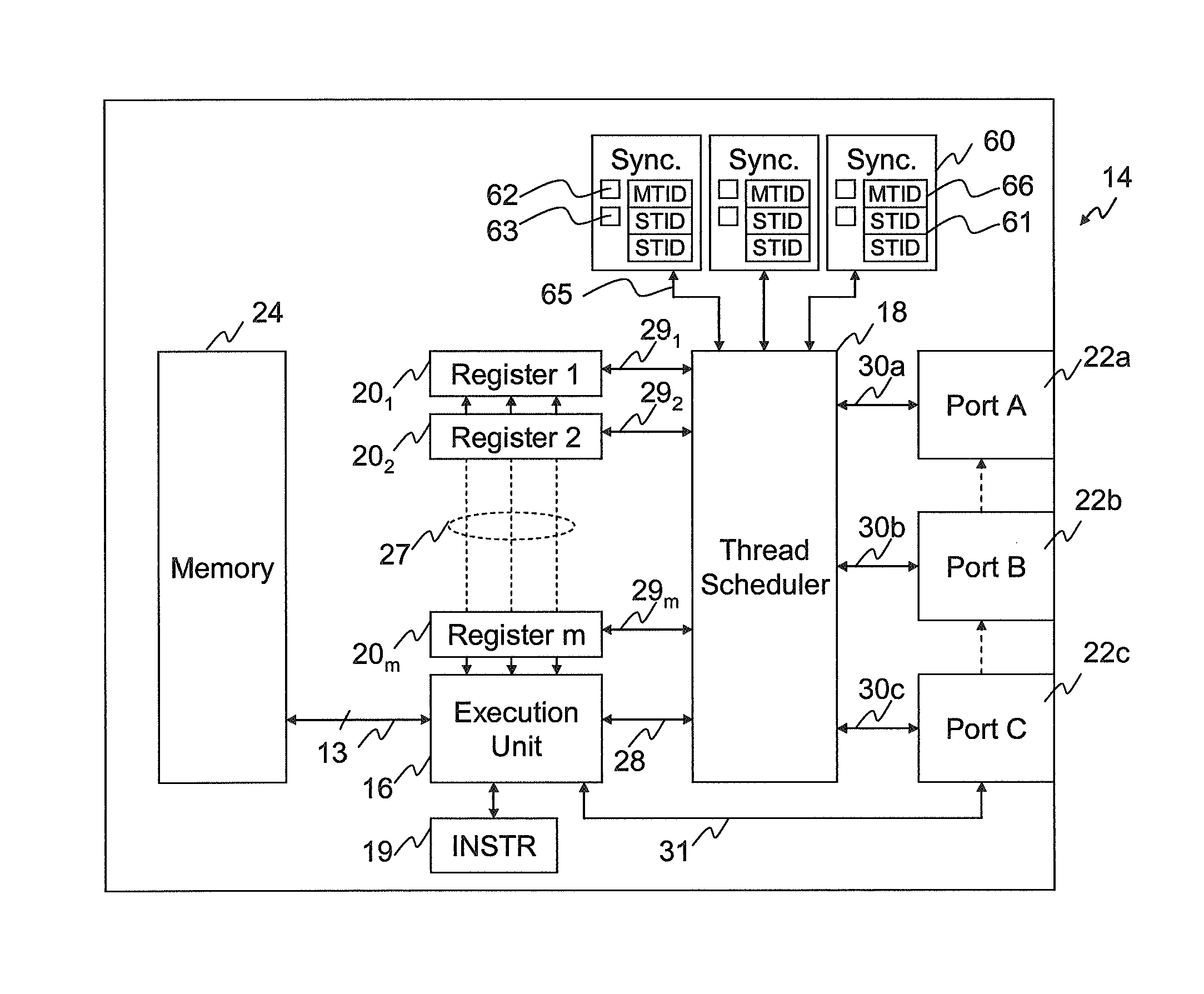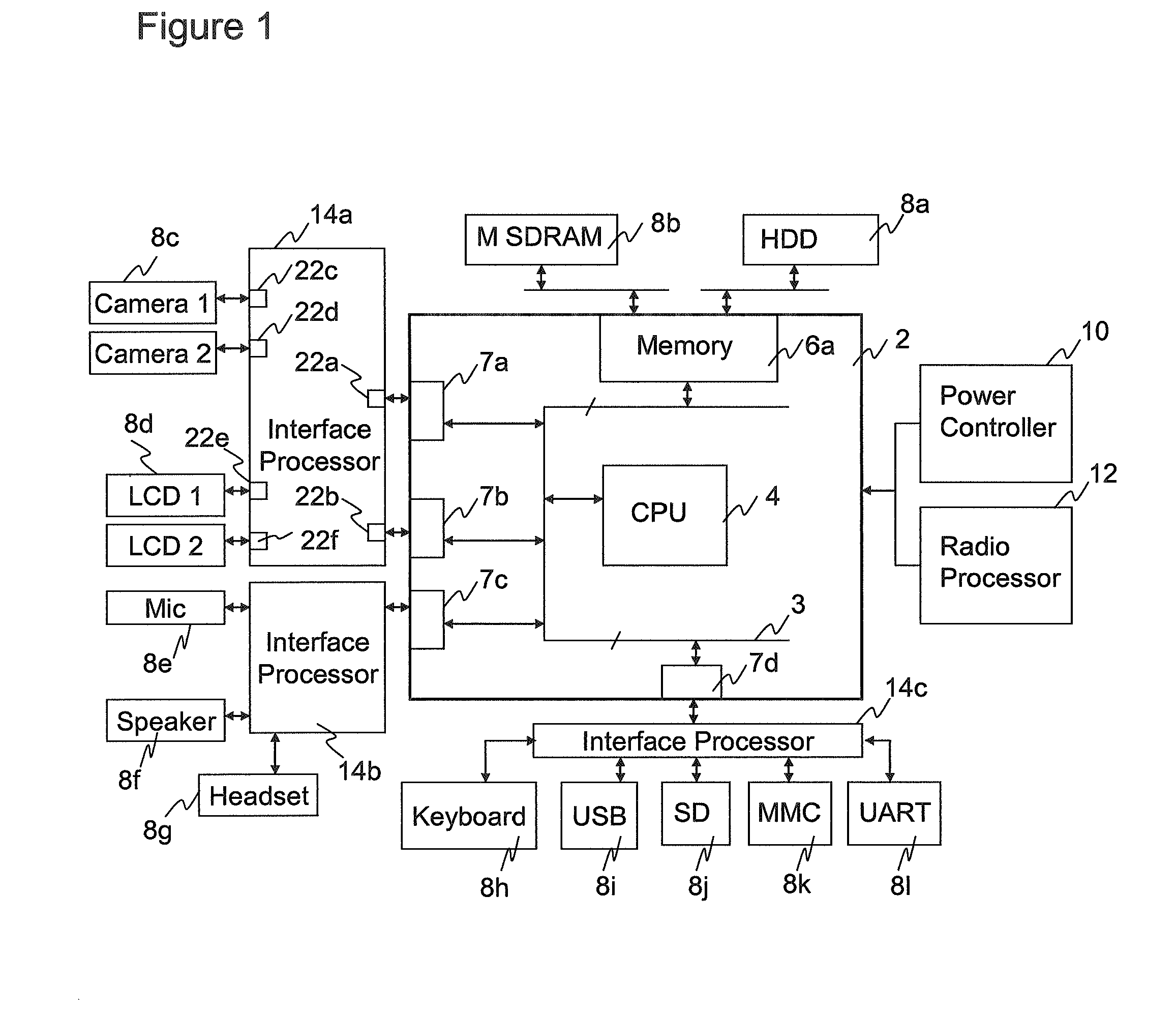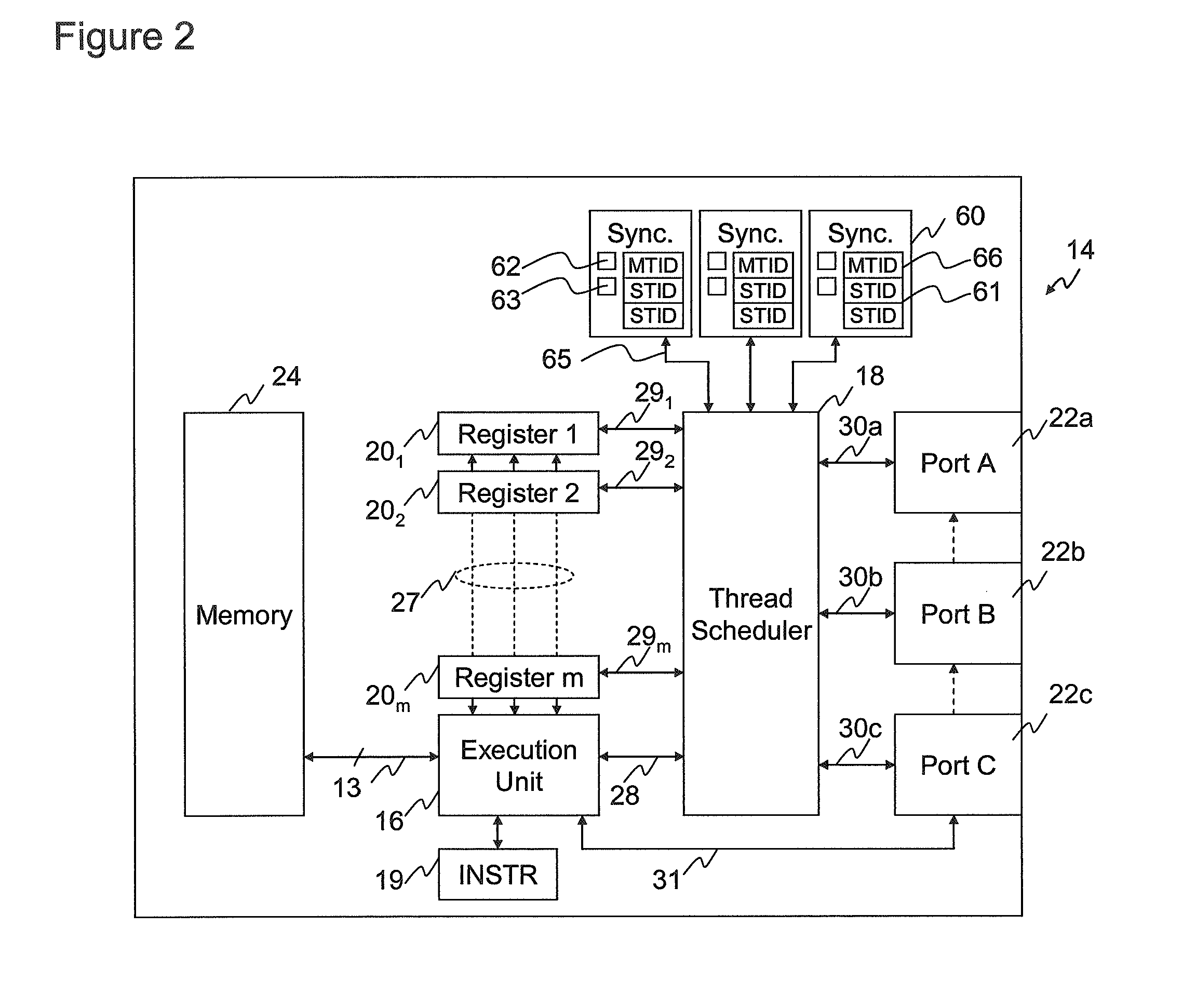Synchronising groups of threads with dedicated hardware logic
a hardware logic and thread technology, applied in multi-programming arrangements, program control, instruments, etc., can solve the problems of burden on the developer, ensuring this is not as straightforward for a software developer, and external activities are typically unpredictable, so as to increase the density of synchronisation code, simplify thread synchronisation, and reduce the effect of synchronisation delay
- Summary
- Abstract
- Description
- Claims
- Application Information
AI Technical Summary
Benefits of technology
Problems solved by technology
Method used
Image
Examples
Embodiment Construction
[0039]FIG. 1 shows an exemplary application of interface processors in a mobile telephone. The mobile applications processor 2 needs to communicate with the plurality of peripheral devices 8. The applications processor 2 comprises a bus 3, a CPU 4, and a memory controller 6a for interfacing with a hard-drive (HDD) 8a and a SDRAM memory 8b, as well as a power controller 10 and radio processor 12.
[0040]The arrangement of FIG. 1 allows the CPU 4 to communicate externally via generic ports 7. In this example, generic ports 7a and 7b are provided for interfacing with cameras 8c and LCD displays 8d; a generic port 7c is provided for interfacing with a microphone 8e, speaker 8f and headset 8g; and a generic port 7d is provided for interfacing with a keyboard 8h, a Universal Serial Bus (USB) device 8i, a Secure Digital (SD) card 8j, an Multi-Media Card (MMC) 8k, and a Universal Asynchronous Receiver / Transmitter (UART) device 8l.
[0041]In FIG. 1, interface processors 14a, 14b and 14c are pla...
PUM
 Login to View More
Login to View More Abstract
Description
Claims
Application Information
 Login to View More
Login to View More - R&D
- Intellectual Property
- Life Sciences
- Materials
- Tech Scout
- Unparalleled Data Quality
- Higher Quality Content
- 60% Fewer Hallucinations
Browse by: Latest US Patents, China's latest patents, Technical Efficacy Thesaurus, Application Domain, Technology Topic, Popular Technical Reports.
© 2025 PatSnap. All rights reserved.Legal|Privacy policy|Modern Slavery Act Transparency Statement|Sitemap|About US| Contact US: help@patsnap.com



